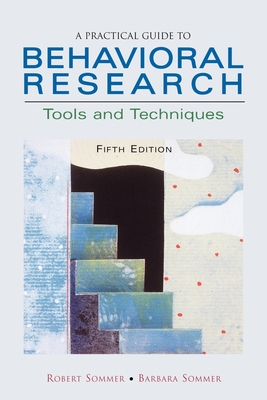
description
d Barbara Sommer's successful book A Practical Guide to Behavioral Research continues to emphasize a hands-on, multimethod, and interdisciplinary approach to behavioral research in psychology, sociology, and anthropology. It expands the fourth edition's coverage of computer-related research methods and employs an international perspective, presenting general principles and their practical applications. Like previous editions, A Practical Guide to Behavioral Research, 5/e, covers the four major approaches to behavioral research (experimentation, observation, questionnaire, interview) and examines other important methods, including attitude and rating scales, the case study, semantic differential, unobtrusive measures, and the use of personal documents. It provides particularly strong treatment of observational approaches, behavior and cognitive mapping, electronic searches and Internet research, and action research. This revision includes two new chapters stimulated by student interest: Chapter 14, "Action Research," addresses the gap between doing research and having it applied; Chapter 15, "The Big Fuzzies," describes techniques for researching important concepts that are difficult to define and measure.
Written in an accessible, colloquial style, this popular book encourages students to actually do research instead of just learning the concepts and language. Clear descriptions and concrete examples of abstract concepts demystify research and help students think about research procedures in a variety of settings, not just in the laboratory. Ideal for undergraduates in research methods classes, A Practical Guide to Behavioral Research, 5/e, is an invaluable reference for students of communications, education, nursing, design, and business. It is also a useful resource for readers who need reliable information or anyone interested in behavioral studies. The authors maintain a useful companion website at http: //psychology.ucdavis.edu/Sommerr/pg5/.
Written in an accessible, colloquial style, this popular book encourages students to actually do research instead of just learning the concepts and language. Clear descriptions and concrete examples of abstract concepts demystify research and help students think about research procedures in a variety of settings, not just in the laboratory. Ideal for undergraduates in research methods classes, A Practical Guide to Behavioral Research, 5/e, is an invaluable reference for students of communications, education, nursing, design, and business. It is also a useful resource for readers who need reliable information or anyone interested in behavioral studies. The authors maintain a useful companion website at http: //psychology.ucdavis.edu/Sommerr/pg5/.
member goods
No member items were found under this heading.
Return Policy
All sales are final
Shipping
No special shipping considerations available.
Shipping fees determined at checkout.







